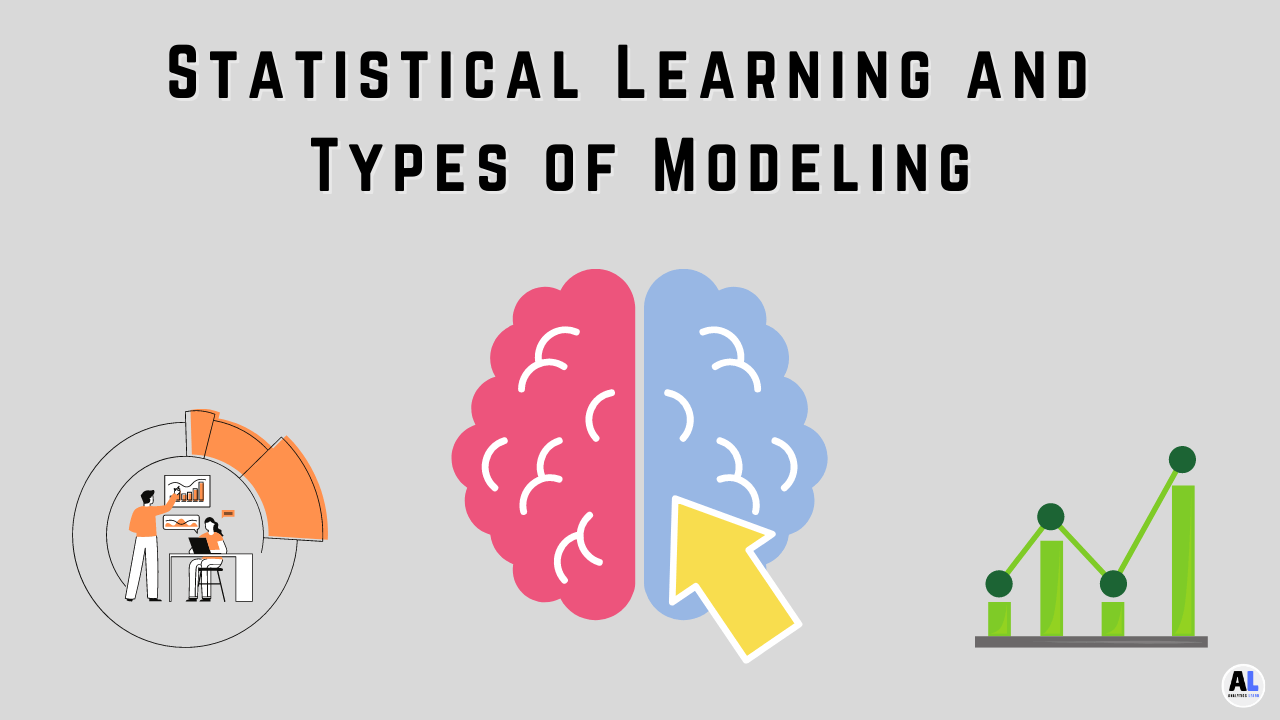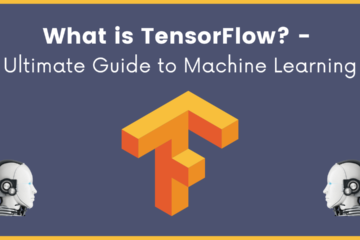Supervised Learning is the machine learning technique used for analyzing know or labeled data for future prediction and forecasting from past user behaviors.
The learning needs input and output variables that name as dependent variable (y) and independent variables (x) for predicting the output.
Supervised Learning models need the data in two forms one is train and another one is a test, this helps the developer to train the model on train data and then tests it on test data.
Types of Supervised Learning
Supervised learning is the collection of multiple machine learning algorithms that are massively used in several fields like data science, Artificial Intelligence, and analytics for business decisions.
Following supervised learning techniques contains different kinds of predictive modeling algorithm which are crucially applied on labeled data.
Regression Analysis
The supervised learning algorithm can apply to numeric data such as Stock prices, Salary, sales, house prices, etc, to predict the same numeric values.
The numeric data modeling can be possible using regression analysis in supervised learning and you can develop a predictive model for numerical data using it.
For training and testing of the machine learning model on numeric data needs a training and testing dataset that needs to split into 70% and 30% respectively.
Even though the regression methods are broadly used for forecasting, trend finding from data by the association of inputs and the target variables.
Following are the few supervised learning algorithms you can learn and build in regression Analysis:
1. Linear Regression
Linear regression is the supervised machine learning algorithm, which is the statistical technique use to predict the output from input variables, and it is utilized using numeric data with input data called the independent variables and output data called dependent variables.
2. Ridge Regression
The regression technique like ridge regression use to avoid the increase of coefficients in a training model.
It is used to penalize the model by doing squares of coefficients that are less than or equal to the constant value of the model.
3. Lasso Regression
In machine Learning lasso regression is the advancement in regression modeling, it stands for least absolute shrinkage and selection operator (LASSO).
Lasso regression method works on variable selection and regularization of the model to increase the interpretability and prediction accuracy of the analytical model.
While doing regularization on the model, it does a summation of modulus of coefficients that is less than or equal to a constant value.
4. Polynomial Regression
Polynomial regression analysis build by applying the method of least squares estimation that reduces the variance of the unbiased estimators of the coefficients,
It uses Gauss–Markov theorem for different purposes like variance, estimators’ coefficients, etc.
5. Elastic Net Regression
Elastic net is a more powerful regularized linear modeling technique that merges L1 and L2 penalty functions together like a combination of ridge and lasso regression.
It is an advanced version and augmentation of a linear model that uses regularization penalties techniques in a loss function at the time of model building.
Classification Analysis:
It is the process of machine learning to create a predictive model for classifying the data for future decisions.
Classification analysis includes several kinds of algorithms and each algorithm prepare for classification based on feasible problem and data.
The classification in supervised machine learning is divided into four types of classification like Binary, Multi-Class, Multi-Label, Imbalanced data classification, etc.
Following are the classification modeling use for supervised machine learning predictive:
1. Logistic Regression:
It is the classification algorithm used to classify the binary output of data that uses the sigmoid function to separate the data into two-part.
The logistic model utilizes the independent variables to predict the binary outcome (True/false, yes/no, 0/1) of the dependent variable.
2. Random Forest
It is the supervised machine learning algorithm use for both regression and classification by following a decision tree approach.
Random forest is the ensemble learning method which is also called black-box modeling where you have to build a model using hyperparameters.
3. KNN (K-nearest neighbor)
The nearest neighbor classifier is acknowledged as a lazy learner and the k-nearest neighbor is the simplest classification algorithm.
The KNN model is used to estimate the relationship of two samples using a euclidian distance formula or Manhattan equation.
4. Naive Bayes
It is a statistical model that uses Baye’s theorem to classify the data, It utilizes the probability estimation by dividing the number of trials by a total number of trials from occurred events.
Naive Bayes is the Bayesian classifiers that implement a problem of data that contains multiple characteristics and that measure the complete probability of output.
5. Support Vector Machine
SVM is the supervised learning model that can use in classification or regression analysis which means it has dual use in Supervised machine learning.
It uses the hyperplane to segregates the data points into two classes and the nearest point of the hyperplane called support vectors.
Steps to build Supervised Learning
To solve a business problem using supervised learning following steps need to perform:
Understand the Problem:
Before using supervised modeling, understanding the business problem to gather the required training data is much crucial.
For example, if you are dealing with financial data for predictive modeling, understanding the finance business problem is significant here.
Data gathering:
Data gathering is a very fundamental part of machine learning after understanding the problem.
Then choose the right data source and easy data scraping technique for data collection is vital for training a quick model.
Data Preparing and Understanding:
After data gathering, data preparation is the next step where you need to prepare all available variables for correct prediction.
The statistical techniques help here to explore and understand the data and you get a glimpse of data where you need to process it.
Treating the missing values, removing the outliers from data, finding the more correlated feature, and applying the right statistical rules, etc.
Data Pre-Processing:
The predictive model accuracy crucially depends on all available variables in data with how much they are correlated and the amount of variance in it.
Generally, the input variable is required to transform to improve the model accuracy whereas the huge amount of feature needs to preprocess for handling the curse of dimensionality.
Building the Model (Training):
Training a well-accurate predictive model on prepared data is a significant part of the process of supervised machine learning.
The machine learning algorithms like linear regression, decision tree, SVM, etc. algorithms you can choose for model building on prepared data (train dataset).
The model building wants to train data where you can implement the chosen supervised learning algorithm with the help of various programming languages.
Evaluate the Model (Testing):
After model building, you need to test the trained model on test data to check the right fit of the model and how accurate the model is predicting the output.
It is necessary to evaluate how robust the algorithm is learning from data and you can add variance or bias in the model to improve accuracy.
There are certain techniques you should use to validate the model to improve the accuracy and correctness of the trained model.
To validate the model, you can use the k-fold validation or cross-validation technique to improve the accuracy of the training algorithm.
Improving the Model Performance:
If you need better performance in a prediction of the model, then it is required to implements the statistical measures in it.
The statistical techniques like kappa value, sensitivity, and specificity, precision and recall, f score, all can use to improve the performance of the model.
Important Supervised Learning Application:
Face Recognition: The recognition of human faces you can do using deep learning with the help of multiple layers perceptron to find exact matching faces.
Sentiment Analysis: It is the supervised classification method implement for text analysis to classify the various text in data to gather the exact sentiments from data.
Handwriting recognition: Machine learning use supervised algorithms to match the writing pattern and the signature to shows the authenticity of the person and plagiarism.
Object Detection using Computer Vision: Computer Vision is a modern technology that is highly used for modern cars and electronic applications to detect object movement and behaviors.
Spam Detection: Supervised learning algorithms like naive Bayes or KNN is used to detect the spam messages or object from data and It is mostly used for e-commerce and messaging application.
Conclusion
Machine Learning is a growing field with rapidly optimizing functionality of modern algorithms makes supervised machine learning techniques more demanding.
Classification and regression algorithms are well constructed for a wide variety of problems, but a huge amount of complex data need more iterative modeling.
Deep learning techniques and ensemble modeling algorithms help a lot to the modern complex problems to add the functionality of the iterative model building and performance evaluation.
Recommended Articles:
What Is The Difference Between Data Science And Artificial Intelligence?
What Are The Types Of Machine Learning?
Top Computer Vision Tools In The 21st Century.
A Complete Guide On Linear Regression For Data Science
What Is Exploratory Data Analysis?

Meet Nitin, a seasoned professional in the field of data engineering. With a Post Graduation in Data Science and Analytics, Nitin is a key contributor to the healthcare sector, specializing in data analysis, machine learning, AI, blockchain, and various data-related tools and technologies. As the Co-founder and editor of analyticslearn.com, Nitin brings a wealth of knowledge and experience to the realm of analytics. Join us in exploring the exciting intersection of healthcare and data science with Nitin as your guide.










